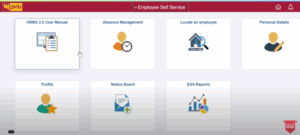What Is Working Capital Cycle (WCC) And How It Helps Your Business Grow?
Winning new clients and excelling in new projects may seem like the greatest challenge every professional service firm faces, but there is something more significant that impacts both the profitability and sustainability of the firm.
Yes, you guessed it right, the financial functions of your business.
Although less visible, the seamless financial function is crucial for effective working capital management. And mastering the financial function is the biggest responsibility of not just the finance team but everyone in the firm. It is especially crucial in project-based firms where incomes can be infrequent, but outgoings are regular.
What is the working capital cycle?
The working capital cycle, or WCC, also referred to as Net Working Capitals Days or NWCD is the length of time taken by firms to convert net current assets and liabilities into a cash amount. Typically, the best practice includes short working capital cycles. This is because the capital that is tied up in the system doesn’t result in fund growth or earnings returns.
In simple terms, clients that take months to pay the invoices back while your firm incurs frequent outgoings in the form of fees and salaries are constructively borrowing your working capital without paying any interest.
Why is working capital management important?
Efficient working capital management is important because it makes sure that your company is maintaining sufficient liquidity to protect your firm’s outgoings, therefore maintenance of a sustainable working capital cycle can be challenging, especially for professional services firms. This is because these cycles are usually longer than those in stock-and-debtor businesses.
The ultimate aim of finance managers in such situations is smoothing out the elongated peaks and troughs between frequent outgoings and sporadic earnings. If not checked and elevated on time, significant problems can arise.
In simple terms, unmanaged working capital has the possibility of threatening your daily operations or the viability of the project. Over the medium to long term, unmanaged working capital can curtail your firm’s ability to innovate, develop and grow.
Advantages of the working capital cycle
Working capital can easily smoothen the fluctuations in revenue. For instance, there are many businesses that experience some seasonality in their sales. They may sell more in certain months while making no profits in others. With adequate working capital, it becomes possible for the firm to make extra purchases from suppliers to get ready for the busy months while also taking care of financial obligations during periods where it generates fewer profits.
A retailer, for instance, may generate 70% of his revenue in November and December, but that doesn’t mean he is free from paying rent and payroll other times of the year. By analyzing the working capital needs and maintaining a sufficient buffer, the retailer can make sure he has enough funds to stock the supplies before November arrives, hire temps for the busy season, and plan how many permanent staffs he can take care of.
Working capital is a prevalent metric for liquidity, efficiency and overall health of your company. It is also a reflection of the results of several company activities such as debt management, revenue collection, inventory management and payments to suppliers. The reason is, that it includes accounts payable and receivable, portions of debt due, cash, and other short-term accounts. By managing these aspects, one directly manages the working capital.
How to increase working capital efficiently?
Here are some tactics to increase the working capital efficiently:
- Take long-term debt to increase the current assets by adding to the firm’s available cash without overly increasing the current liabilities.
- Refinance the short-term debts as longer-term debts to reduce current liabilities as the debts will no longer be due within the current year.
- Sell illiquid assets for cash to increase your current assets.
- Analyze and reduce expenses to reduce your current liabilities.
For more help understanding working capital and ways to meet short term needs, please see the resource below.
Infographic provided by Seacoast Business Funding – invoice factoring services
Signing off
It is evident from the details that managing the working capital cycle is crucial for your company’s overall health.
So, wait no more and connect with a reliable financial expert to create positive working capital that not only boosts the business’s performance but also enhances financial close efficiency while cutting back other costs and delays.

Pranab Bhandari is an Editor of the Financial Blog “Financebuzz”. Apart from writing informative financial articles for his blog, he is a regular contributor to many national and international publications namely Tweak Your Biz, Growth Rocks ETC.






